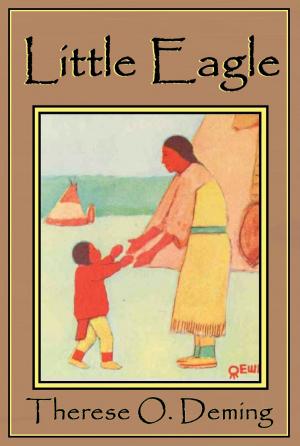The Trilogy of Savitri's Garden: India to the Americas 1838, (Book1, Part I) - Dreams of El Dorado
Fiction & Literature, Historical| Author: | Fisal Ally | ISBN: | 9781988288291 |
| Publisher: | Fisal Ally | Publication: | May 4, 2016 |
| Imprint: | Smashwords Edition | Language: | English |
| Author: | Fisal Ally |
| ISBN: | 9781988288291 |
| Publisher: | Fisal Ally |
| Publication: | May 4, 2016 |
| Imprint: | Smashwords Edition |
| Language: | English |
Book 1, Part I: The famine had begun in the summer of 1837, devastating the North Western Provinces of India. The monsoon was deceptive, betraying hundreds of thousands. Many were dying and starving.
In December 1837, two young men, Vishnu and Kalil, had set out on a journey to find the riches of El Dorado. On the way from the Maya baazar in Awadh to board the Whitby ship docked in the Hugli River in Kolkata, they came upon an Armenian man who was procuring laborers from the hills of Chota Nagpore to export to the British Colonies.
The first novel of the trilogy of Savitri’s Garden, India to the Americas 1838, is a novel reminiscing on the journey of the first group of Indian laborers to have arrived in the Americas. The story outlines the suffering and success of a people, where many were torn from their families through deceptions and kidnappings, and taken into the Americas to work on a five-year labor contract; some had also left by choice to escape poverty, famine and persecution. Savitri, her mother and brother were on the voyage to the New World against their wishes. Her mother had died during the journey, and Savitri and her brother were left on their own to endure the pain and suffering of losing their mother. Upon arriving on the South American continent in British Guiana to commence their labor producing sugar for the rest of the sweet-toothed world, Savitri saw hope in the rich soil of the colony.
Her eyes shifted back to the plant. “I will plant you here,” she whispered, lifting her body from the tree stump, once used by the enslaved Africans as a tool bench. She got down on her knees, and spent half an hour clearing away the shrubs surrounding the pond, and then dug a small hole in the earth and planted the withered marigold plant. She wiped a tear from her eyes and a glow appeared on her face as she gazed at the plant. She wanted to keep her mother’s memories alive on the new land.
Book 1, Part I: The famine had begun in the summer of 1837, devastating the North Western Provinces of India. The monsoon was deceptive, betraying hundreds of thousands. Many were dying and starving.
In December 1837, two young men, Vishnu and Kalil, had set out on a journey to find the riches of El Dorado. On the way from the Maya baazar in Awadh to board the Whitby ship docked in the Hugli River in Kolkata, they came upon an Armenian man who was procuring laborers from the hills of Chota Nagpore to export to the British Colonies.
The first novel of the trilogy of Savitri’s Garden, India to the Americas 1838, is a novel reminiscing on the journey of the first group of Indian laborers to have arrived in the Americas. The story outlines the suffering and success of a people, where many were torn from their families through deceptions and kidnappings, and taken into the Americas to work on a five-year labor contract; some had also left by choice to escape poverty, famine and persecution. Savitri, her mother and brother were on the voyage to the New World against their wishes. Her mother had died during the journey, and Savitri and her brother were left on their own to endure the pain and suffering of losing their mother. Upon arriving on the South American continent in British Guiana to commence their labor producing sugar for the rest of the sweet-toothed world, Savitri saw hope in the rich soil of the colony.
Her eyes shifted back to the plant. “I will plant you here,” she whispered, lifting her body from the tree stump, once used by the enslaved Africans as a tool bench. She got down on her knees, and spent half an hour clearing away the shrubs surrounding the pond, and then dug a small hole in the earth and planted the withered marigold plant. She wiped a tear from her eyes and a glow appeared on her face as she gazed at the plant. She wanted to keep her mother’s memories alive on the new land.















